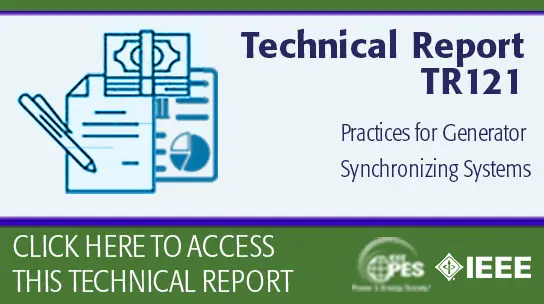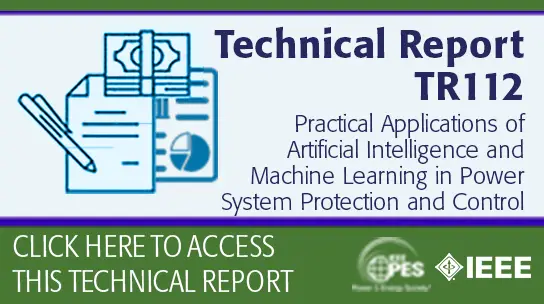-
Members: FreePES
IEEE Members: $45.00
Non-members: $70.00Pages/Slides: 133
22 Aug 1996
FOREWORD Digital hardware was being used in commercial products as early as mid 1970's. While its application in power system protection and control started in late 1970's, the use was limited to a few applications because of the cost of the products offered was not favorable when compared to the cost of analog devices which had been in the market for a long time. At that time, most applications in power system protection were of an experimental nature and were developed around the class of computer that were then known as mini-computers. Considerable pioneering work in digital relaying was done in the late 1960's and 1970's. In 1971 the Power System Relaying Committee (PSRC) of the IEEE established a Computer Relaying Subcommittee. Several engineers working for utilities, manufacturers, and universities participated in the activities of this Subcommittee. With the approval of the PSRC and the blessings of its Chair, Stan Horowitz, the Subcommittee developed a tutorial, "Computer Relaying" that was offered in New York and Vancouver (Canada) in 1979. Eight members of the Subcommittee participated in preparing and offering the tutorial. Since most of the work at that stage was of experimental nature the objective was to make protection engineers aware of the upcoming techniques and devices and their strengths and weaknesses. The introduction of 8-bit microprocessor chips got the area of digital relaying started in a big way. (The area is mostly referred to as microprocessor based relaying.) New techniques of handling data and newer ways to monitor, protect and control power systems started to emerge as engineers realized the potential of the new technology. Several relays which used digital controllers and many others which used microprocessors for processing power system signals started to appear in the market place. The PSRC formed a working group in 1986 for the purpose of preparing a new tutorial that would provide the up to date information on the state of the developments in microprocessor based relays and relay systems. This effort was supported the four out of the seven engineers who participate in the preparation of the first tutorial, and four newer participants. With the dedicated effort of those engineers and, with encouragement and support of Mr. Clayton Griffin the then Chair of the PSRC, the tutorial "Microprocessor Based Relays and Protection Systems" was prepared and offered in New York (NY), Portland (OR), Long Beach (CA), and Atlanta (GA). Both the first and the second tutorial were well received and were very well attended. Since the late 1970's, the microprocessor technology has undergone a "revolution". The speed of processing has increased by more than two orders of magnitude. Special purpose chips for data processing, control, communication and other specialized functions have become easily available. Bulk memory chips have become available and are being used in newer devices. Not only that the performance of the individual devices has improved, newer and more useful architectures have been developed. In addition to the phenomenal increase in the performance, the prices of these devices have decreased by at least two orders of magnitude. The advancements in the hardware and in the digital communications technology has opened new horizons for the power system engineers in general and power system protection engineers in particular. They have made it possible to address the monitoring control and protection problems in a way that was virtually unbelievable only a decade ago. Last year the PSRC decided that it was time to review the advancements in the area of microprocessor based protection and communication techniques used by relays. I was assigned the task of coordinating the preparation of a tutorial that would review the advancements in protection systems. While organizing the development of this tutorial, I fortunate in finding four of the contributors from the 1988 tutorial effort willing to help. In addition, I found five other volunteers for preparing the tutorial text and offering the tutorial at the upcoming IEEE PES meetings. The contributors have worked hard and have put together a package that brings into focus the mathematical techniques, the newer concepts, and the potential of exploiting the emerging technologies. The content of the tutorial is a mix of theoretical developments, practical applications and the directions in which the new technological advances are likely to take us. In addition to the help of the contributors, guidance and encouragement of John Appleyard, Chair of the PSRC made my task much easier. I wish to take this opportunity to thank, on my behalf and on behalf of the PSRC, all the contributors for their effort in completing this task. While I have found this tutorial not only educational, but also stimulating and thought provoking. I hope that participants in the tutorial courses and those who read the course text will also find it beneficial. Mohindar S. Sachdev 1996 - November -01 Download Full Version
Primary Committee:
Power Engineering Education Committee
Sponsor Committees:
Pov.er System Relaying Committee


